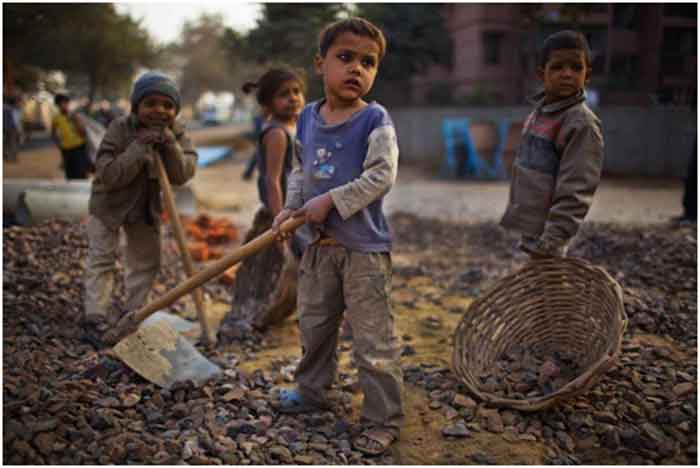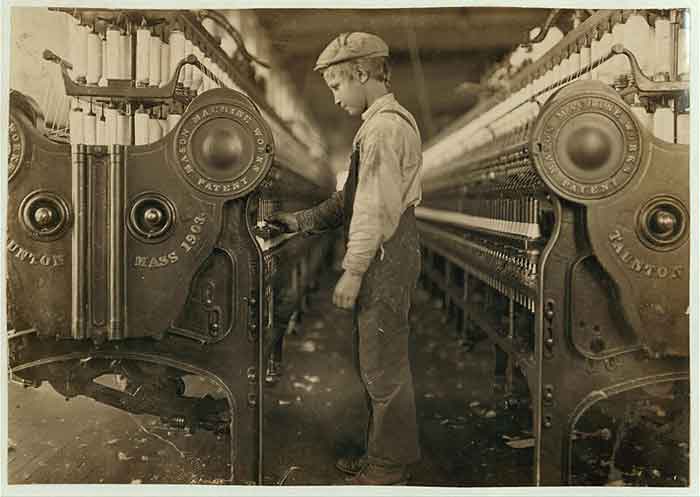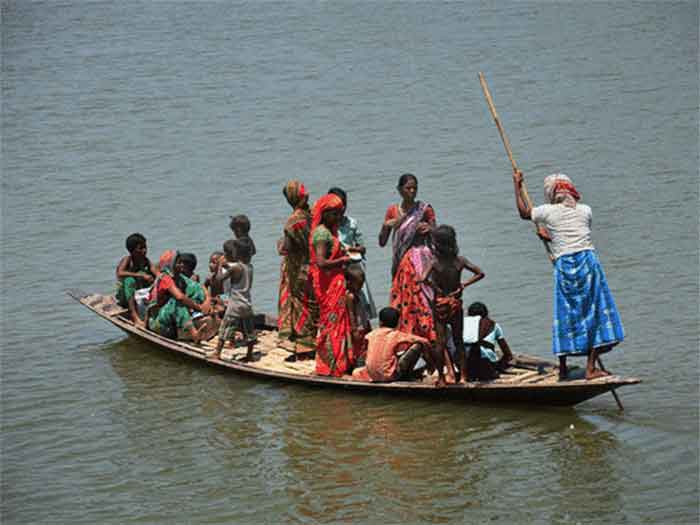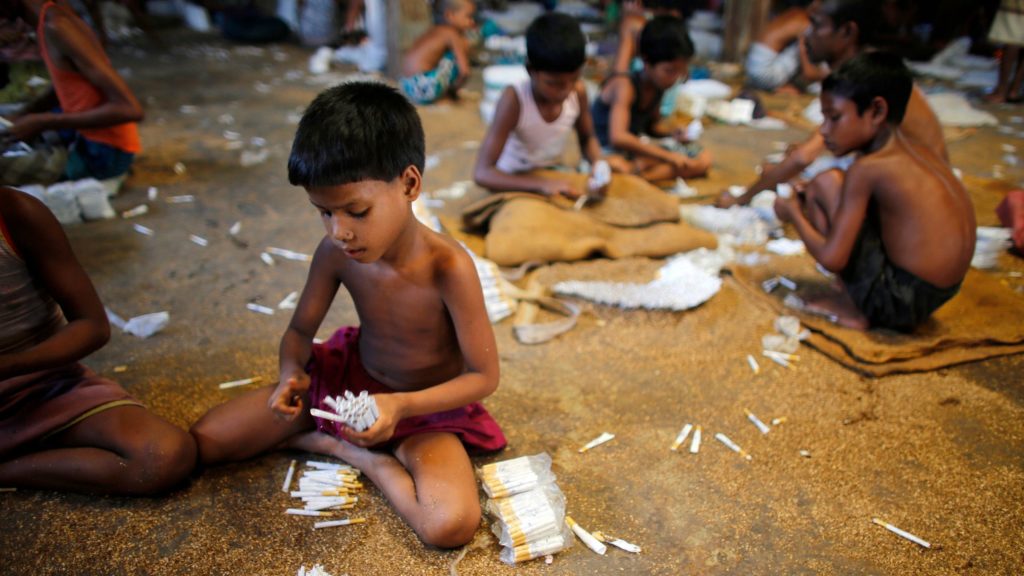Children belong in schools, not workplaces. Child labor deprives them of their right to go to school and leads to intergenerational cycles of poverty.

According to the 2011 national census of India, there are 10.13 million child laborers in India. Despite the gradual decline in the rates, children are still being used in severe forms of labor. The continuing persistence of child labor also poses a threat to a nation’s economy. It has several negative short and long-term consequences for children, such as denial of education and undermining their physical and mental health. Child labor is a result of many factors such as poverty, caste discrimination, and lack of opportunities for adults; these factors are not only the cause but also a consequence of underlying social inequities in India.
Tackling the issue
Professor Shanta Sinha, who is a Padma Shri and Ramon Magsaysay awardee, founder of the MVF foundation and has also served on various boards steering them towards positive action against child labor, which has resulted in major policy changes in the country. An untiring activist at heart, she was the first chairperson of the National Commission for Protection of Child Rights (NCPCR) instituted under the Protection of child rights act of 2005. In a candid and extremely inspiring conversation with some of the second-year students of IIM Ahmedabad, she talks about the importance of education and organizational reform in tackling the evil of child labor in our society.
Professor Sinha believes that teachers and other people in our education system should act as frontline supporters to protect children and must alert other people involved in the process to situations where children display signs of being under stress or indicate they are being forced into child labor. Getting children out of work and/or helping them stay in school also requires bigger changes in policy so as to empower families to choose education over exploitative labor.
Creating impactful programs
Furthering her thoughts on the transformative power of how well-defined and thought-out programs can help curb the evil of child labor, the conversation also shed some light on the impact it can have on children of all ages, gender, caste, and socio-economic sections of the society. Prof. Sinha highlighted that the key principle embodied by any program that is implemented by MVF is inclusion of all classes, social groups, and communities in the program must be adhered to at all times in building a social norm that no child should ever work and that every child must get full-time formal education’. Exclusion of any individual from the program would only result in shifting the issue from the agenda of child rights to issues of identities or class interests. MVF also strongly discourages working towards achieving results and targets; rather, the emphasis of the program must be on building processes for the total involvement of the community, for example, by setting up forums to bring pressure, establishing committees, and ensuring their systematic functioning on principles of transparency and democracy.
Professor Sinha also stresses the importance of not setting up institutions that are parallel to those run by the State; rather, the programs run by MVF should work towards strengthening the existing institutions (i.e., schools, welfare hostels, and gram panchayats). “It’s the process of accessing these institutions that leads to empowerment of the people involved and the community as a whole. The community then starts to correct the system and demand its share in the policymaking,” –she added. This, in effect, will help the voice of the people become the voice of the government/establishment.
Building a sustainable organization
Most of the organizations currently involved either in policy reform and/or tackling the issue of child labor at the grass-root level are unable to create an impact on a large scale. Professor Sinha believes that this is because members don’t associate themselves with the objectives of the organization. This is why she at MVF has instituted that all members of the organization should believe in the charter of basic principles of the emancipation of child rights. She also highlighted the problem of hierarchy and the need for organizational reform in the non-profit sector in India. Hence, she instituted the policy of autonomy in decision making and working out the finer details as the members at the local level deem fit. The innovative methods that emerge from such processes are shared within MVF so that other members can also implement and benefit from them. Through these kinds of organizational practices, MVF’s program develops from one stage to another in a spiral form. Thus, the entire process does not repeat from the start when it begins in a new area but takes off from the stage where the MVF is at the moment in another area.
MVF also prides itself on working together with the village community. Every occasion is utilized to make sure that it is the community leaders who are at the forefront giving strength to the program; this also ensures that the community owns the program and that MVF is not substituting for the community in the program. Thus, MVF acts as a facilitator of tackling child labor and not a directly implementing agency.
Lastly, Professor Sinha also commented on the responsibility of each individual in the whole fight against stopping child labor. She believes that we should begin by first of all not employing any children in our homes/workplaces and denounce our relatives if they do so. She also stressed on the importance of being a conscientious consumer and make sure that we don’t use products of those companies who employ child laborers.
References
Child labor and exploitation. (2011). Unicef.org. https://www.unicef.org/india/what-we-do/child-labour-exploitation
Thomson Reuters Foundation. (2017, November 16). Helping children stay in school is key to ending child labor. Theirworld; Theirworld. https://theirworld.org/news/children-in-school-key-to-end-child-labour
Wikipedia Contributors. (2020, December 4). Shantha Sinha. Wikipedia; Wikimedia Foundation. https://en.wikipedia.org/wiki/Shantha_Sinha
MVF India – Child Rights Organization. (2020, July 30). MVF. https://mvfindia.in/
The author, Ahmad Faraz, is a second-year management student at IIM Ahmedabad. A large part of the article was motivated by the author’s interaction with Professor Shanta Sinha, founder of the MVF (Mamidipudi Venkatarangaiya Foundation).
SIGN UP FOR COUNTERCURRENTS DAILY NEWSLETTER
















































